Did you know? Over 30% of new UK homes now feature underfloor heating—making it one of the most sought-after comfort and energy-efficiency upgrades in residential construction. With more homeowners than ever prioritising both comfort and eco-friendly living, the big question is: Should you choose water or electric underfloor heating for your property? This comprehensive guide is built to help you make the best decision for your home, your family, and your future energy bills.
Startling Facts: Why Underfloor Heating Is Revolutionising UK Homes
"Over 30% of new UK homes now feature underfloor heating—making it one of the most sought-after comfort and energy-efficiency upgrades in residential construction."
Underfloor heating is quickly becoming the gold standard for modern comfort in British homes. Unlike traditional central heating systems that rely on bulky radiators, underfloor heating distributes warmth evenly—eliminating cold spots and freeing up space for interior design. As energy prices climb and property owners seek sustainable, cost-effective heating solutions, underfloor heating systems shine for their efficiency and compatibility with emerging technologies like heat pumps. Builders and renovators alike are specifying wet underfloor heating in new builds and exploring electric underfloor heating for retrofits, making it a versatile upgrade with enduring value.

What You'll Learn About Water vs. Electric Underfloor Heating Systems
The key differences between water underfloor and electric underfloor heating
Cost, installation, and running costs comparison
Lifespan, maintenance, and suitability insights
Expert advice on selecting the right heating system
Understanding Underfloor Heating: Types and Technologies
What is Underfloor Heating? Exploring Water vs. Electric Underfloor Heating Basics
Underfloor heating (UFH) has become a household term across the UK, representing both an efficient heating system and a smart interior design choice. There are two main types to consider: water underfloor heating (also known as wet underfloor heating) and electric underfloor heating (sometimes called dry underfloor heating). Both systems function by turning your floor into a giant, invisible radiator, delivering gentle, even warmth from the ground up.
The water system uses a network of pipes laid beneath the floor to circulate heated water, making it suitable for larger spaces and integration with low temperature heat sources, such as a modern heat pump or traditional boilers. In contrast, electric underfloor heating relies on cables or mats installed directly below the flooring, offering a straightforward solution—especially for retrofits and smaller room applications. Choosing between water and electric underfloor heating requires understanding your property, budget, and long-term goals for both comfort and cost.
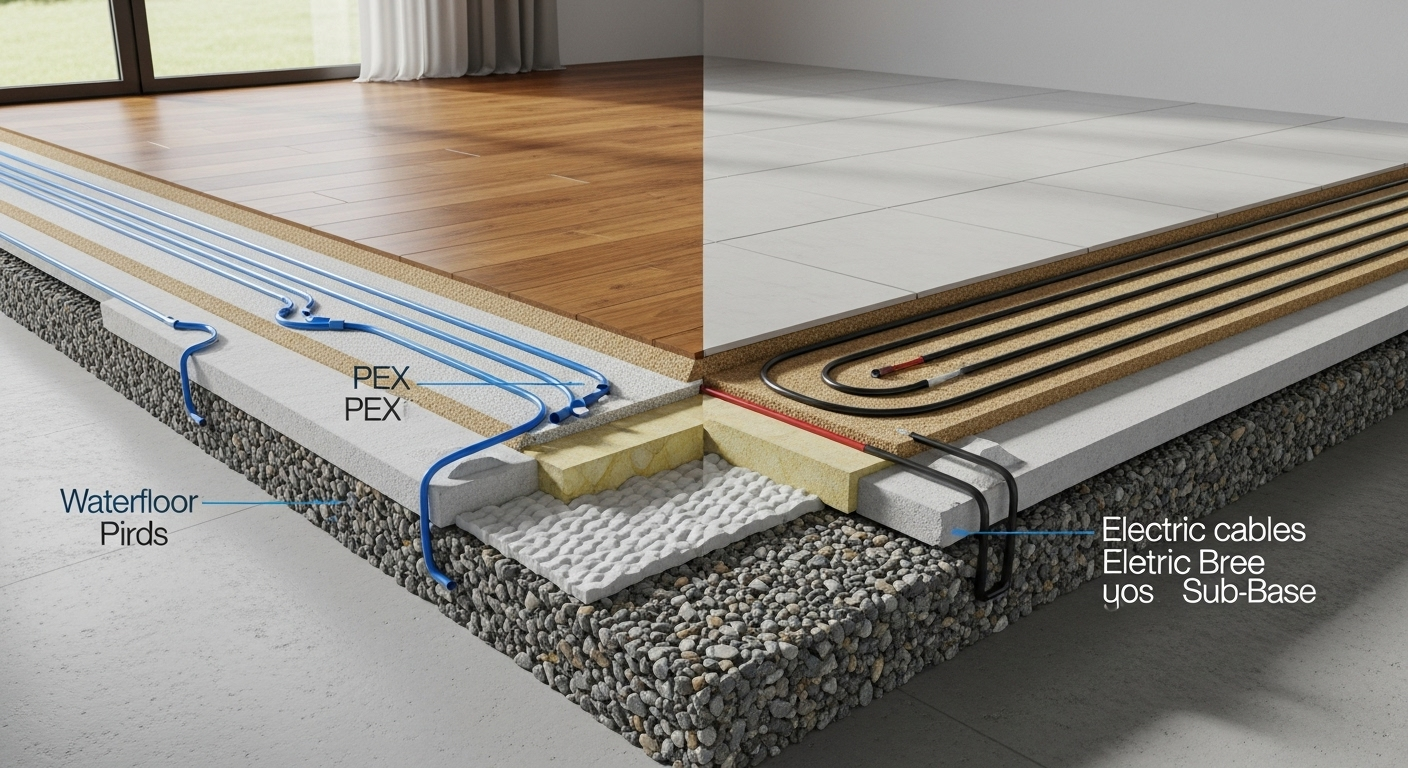
How Does Water Underfloor Heating Work?
Water underfloor heating systems operate by circling warm water through a continuous pipe loop embedded beneath your floor. This pipework connects seamlessly to your central heating source—be it a gas boiler or an ultra-efficient heat pump. As warm water flows, heat radiates upward, warming the entire floor surface and maintaining a consistent temperature throughout the room.
Because these systems distribute heat at lower temperatures compared to traditional radiators, they’re remarkably energy efficient—especially when paired with renewable heat pumps. Wet underfloor heating is a popular choice for new builds and large-scale refurbishments, as it can be integrated from the start, maximising both efficiency and comfort. However, it’s important to note that installation is more complex, often requiring not just pipe laying, but also adjustments for floor height and insulation to ensure optimal performance.
How Does Electric Underfloor Heating Work?
Electric underfloor heating systems harness electrical resistance through either flexible cables or pre-fabricated heating mats. These components are fitted directly beneath the floor’s surface, making installation fast and minimally disruptive—ideal for renovations, bathrooms, kitchens, and smaller rooms. When switched on, the cables or mats generate radiant heat, which quickly warms the floor and the immediate living space above.
While electric underfloor heating scores highly for simplicity and speed of installation, it tends to have higher running costs due to electricity prices in the UK. It’s best suited for well-insulated, small-to-medium areas or as a secondary heating system. If you’re considering a retrofit project where floor height changes need to be minimal or rapid results are required, electric systems offer clear benefits—but at the expense of higher operating costs over time.
Water vs. Electric Underfloor Heating: Side-by-Side Comparison Table
Feature |
Water Underfloor Heating |
Electric Underfloor Heating |
|---|---|---|
Installation Cost |
Higher - often requires professional fitting and floor height adjustment |
Lower - DIY-friendly for small rooms, minimal floor build-up needed |
Running Costs |
Lower - efficient with heat pumps or boilers, uses warm water at low temps |
Higher - uses mains electricity, costs more per kWh |
Longevity |
Very long; can last 25+ years with minimal maintenance |
Long; mats or cables may need replacement or repair every 15–20 years |
Maintenance |
Minimal; periodic checks, especially if combined with heat pumps |
Little; usually maintenance-free once installed |
Response Time |
Slower; takes longer to warm up but retains heat well |
Faster; heats up quickly, ideal for quick temperature boosts |
Typical Applications |
Best for new builds, extensions, and large open-plan areas |
Ideal for bathrooms, kitchens, and retrofit projects |
Water Underfloor Heating: In-Depth Features, Pros & Cons
Energy efficiency and compatibility with heat pumps
Suitability for new builds and retrofits
Long-term durability and ease of maintenance
Potential drawbacks: slower warm-up, higher installation cost
Water underfloor heating stands out as a favourite for whole-house applications and new build projects. Its superior energy efficiency is largely due to the use of warm water at lower temperatures, significantly reducing running costs when paired with modern condensing boilers or heat pumps. For those planning a new build, water underfloor heating fits seamlessly into floors at the construction stage, boosting comfort levels and adding tangible value to the property.
Although the initial installation cost is higher and the process more involved—requiring careful planning around floor height, insulation, and heat source—the longevity and minimal maintenance make it a wise long-term move. The main drawback is a slower warm-up time compared to electric systems, but this is typically offset by excellent heat retention and steady, even warmth once operating. For environmentally conscious homeowners and those aiming to future-proof their investment, water underfloor heating is a compelling option.
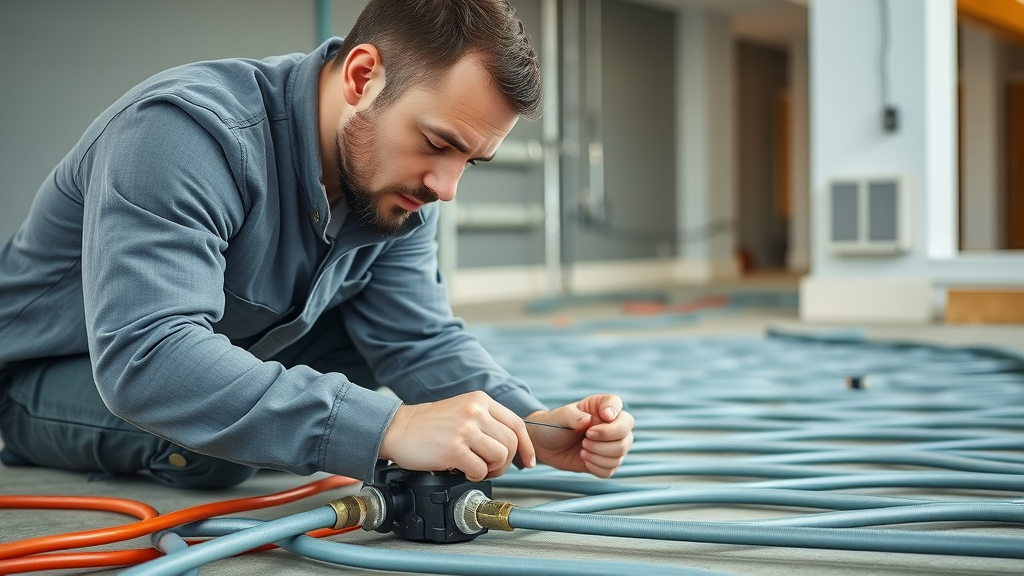
Electric Underfloor Heating: In-Depth Features, Pros & Cons
Quick installation ideal for renovations
Lower upfront costs but higher running costs
Suitability for smaller areas
Potential drawbacks: energy demands, suitability for whole-house use
Electric underfloor heating is well-suited for those looking for a simple, fuss-free solution—especially when undertaking a retrofit or refurbishment. The mats or cables are slim and easy to fit directly under carpet, tile, or laminate, requiring no significant increase in floor height. Installation is often DIY-friendly for single rooms, but professional setup is essential for larger spaces or connection to the mains—using a qualified electrician for safety and compliance.
The appeal of electric underfloor heating is its speed—it offers fast heat-up times, making it ideal for secondary heating in bathrooms and kitchens. However, the running costs are higher compared to water systems because electricity, on average, is pricier than gas or heat pump output. For smaller homes or one-off rooms where disruption needs to be minimal and installation must be completed quickly, electric underfloor heating ticks all the boxes. The trade-off is higher long-term bills and suitability confined mainly to compact or regularly used zones.
Cost Comparison: Water vs. Electric Underfloor Heating Systems
Installation Cost: Water Underfloor vs. Electric Underfloor Systems
The installation cost of water vs. electric underfloor heating can vary dramatically. A water underfloor system typically requires more extensive work: laying pipework, increasing floor height, and careful integration with the existing heating system. On average, expect labour and materials for water systems to cost more, especially in retrofit scenarios. This is why they’re most often installed as part of new builds or large renovations, where disruption is already part of the process.
By contrast, electric underfloor heating systems involve lower upfront costs. The mats or cables are easier to lay, especially over existing subfloors. Less building work means lower installation cost, making electric underfloor heating a top pick for bathrooms, kitchens, and quick upgrades. However, DIY installation should only be attempted for small, simple areas—a qualified electrician must handle final connection for safety and compliance with UK building regulations.
Running Costs and Energy Consumption: Electric vs. Water Underfloor Heating
Running costs are where the long-term value of water underfloor heating shines. Because these systems operate at lower temperatures, especially when combined with an efficient heat pump, they deliver the same comfort while using less energy. Over time, the savings can be substantial, especially in larger or frequently used spaces.
Conversely, electric underfloor heating has higher energy consumption per hour, due to the cost of electricity relative to gas or renewable heat. For regular use across large areas, electric systems can prove costly over time. They’re best reserved for occasional use or smaller rooms, where short bursts of warmth justify the slightly steeper energy bills.

Which System Is Best For Your Home? Key Factors to Consider
Property type: new build vs. retrofit
Floor construction and insulation level
Room usage and heating demands
Integration with existing heating systems
New builds or major renovations are ideal for water underfloor heating because installation can be included from the start—optimising efficiency, comfort, and integration with heat pumps or boilers. For houses with robust insulation, thick concrete slabs, or plans for open-plan living, water-based systems provide excellent value and performance.
For retrofit projects, limited budgets, or smaller rooms, electric underfloor heating may be the smart choice. Minimal construction, fast installation, and on-demand warmth make electric systems especially convenient for bathrooms, ensuites, and kitchens. When deciding, weigh up your property’s age, room size, insulation level, and heating expectations. And remember, consulting a professional at Peak Underfloor Heating Ltd will ensure you find the solution best matched to your home’s unique needs.
The Role of Heat Pumps in Water Underfloor Heating Systems
Combining a heat pump with a water underfloor heating system is the pinnacle of low-carbon, energy-saving comfort. Heat pumps extract warmth from the air or ground outside your home and efficiently transfer it to the water circulating through your underfloor heating system. This synergy allows for consistent heating at lower temperatures, slashing your carbon footprint and your energy bills.
Heat pumps work best in well-insulated properties and are increasingly favoured in UK new builds and renovations, given government incentives for reducing carbon emissions. With a water underfloor heating system designed specifically for use with a heat pump, you’ll unlock peak efficiency and long-term savings—making it an investment poised for the future.
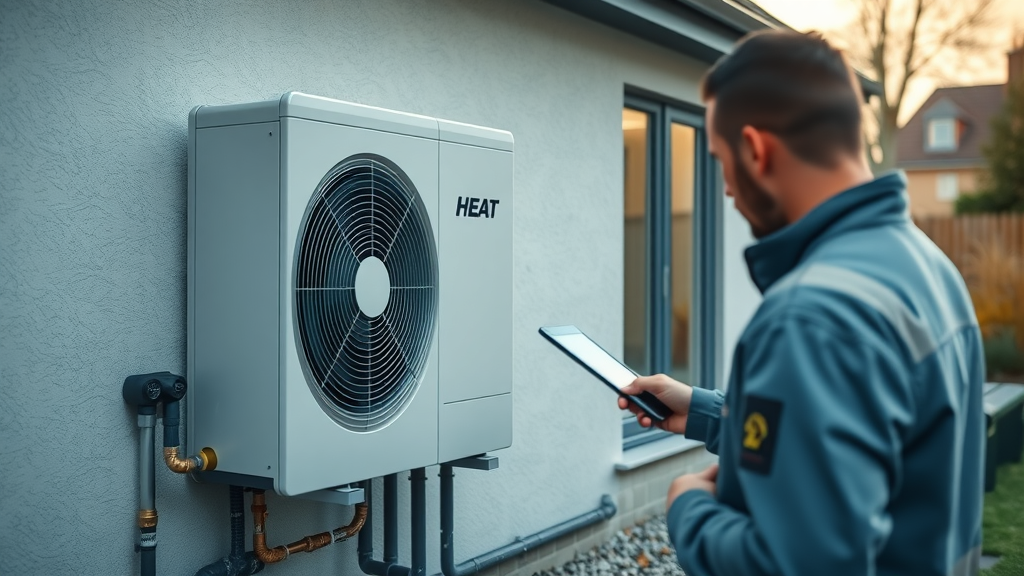
Professional Advice: Choosing the Right Underfloor Heating System
"The right underfloor heating system isn’t just about cost—it’s about long-term comfort, energy savings and adding real value to your home."
— Ed Serrell, Director, Peak Underfloor Heating
Every home, renovation, and budget is different. While guides like this offer a starting point, nothing replaces the insight of a professional underfloor heating installer. Peak Underfloor Heating Ltd specialises in matching each client with the system best suited to their project—factoring in floor height, insulation, energy source, and household use. Their advice ensures you avoid hidden pitfalls and make an investment that guarantees comfort and value for years to come.
Before making your choice, get a tailored assessment. From energy modelling to system design, the experts at Peak Underfloor Heating Ltd take a holistic approach—so you enjoy lower running costs and total peace of mind.
Water vs. Electric Underfloor Heating: The Installation Journey
What Does a Typical Installation Involve?
Assessment, system design, and floor preparation
Laying of pipes or cables for the underfloor heating system
Integration with controls and commissioning
Whether you choose a water or electric underfloor heating system, the installation starts with an expert assessment and custom system design to suit your floor construction, insulation, and room layout. For water underfloor heating, this includes prepping the floor, laying insulation, and securing pipework. The system is then connected to the chosen heat source (usually a boiler or heat pump) and integrated with a modern thermostat for precise control.
Electric underfloor heating is usually installed by rolling out matting or laying loose cables over the prepared subfloor. Once connected, the floor is finished with your desired surface (tile, stone, or laminate), and the electrical connections are tested and commissioned by a qualified electrician. Proper commissioning is essential for safety, performance, and warranty protection—so always entrust this stage to recognised professionals like Peak Underfloor Heating Ltd.
People Also Ask: Common Questions About Water vs. Electric Underfloor Heating
Which is cheaper to run electric or water underfloor heating?
Water underfloor heating is usually much cheaper to run over the long term—especially if connected to a high-efficiency boiler or low-temperature heat pump. The lower running cost comes from the ability to heat large spaces with warm water at lower temperatures. Electric underfloor heating, on the other hand, works well for small areas but has a higher running cost per square metre due to the price of electricity in the UK.
What are the disadvantages of electric underfloor heating?
While electric underfloor heating systems are convenient and cost-effective to install, their main drawbacks are higher operating costs and less suitability for whole-home heating. Electricity is more expensive than gas or heat pumps, so using electric systems to heat large spaces can be costly. They may also struggle to provide sufficient warmth in rooms with poor insulation or in very large properties, making them best for smaller or secondary applications like bathrooms and kitchens.
Is electric or water floor heating better?
The best type of floor heating depends on your specific requirements. Water underfloor heating is better for new builds, large or open-plan areas, and for those who want the lowest possible running cost over decades. Electric underfloor heating is better when speed, simplicity, and minimal disruption are the primary goals, such as in renovations or small spaces.
Which is best, wet or dry underfloor heating?
Wet underfloor heating (water-based) systems are ideal for energy efficiency, long life, and integration with advanced heat sources. Dry systems (electric) work brilliantly for quick installations, small rooms, and retrofitting where disruption needs to be kept to a minimum. Your property type and budget will determine which system delivers the right blend of savings, comfort, and ease of use.
Real-World Scenarios: Electric vs. Water Underfloor Heating Case Studies
Take the example of a family renovating their 1980s home in the Midlands. They chose electric underfloor heating for speedy, cost-effective warmth in their kitchen and bathroom, where interruptions were kept to a minimum. A new build in Surrey, however, installed water underfloor heating throughout their open-plan ground floor. Their decision paid off with lower energy bills, especially after integrating a modern heat pump. Both families reported improved comfort and satisfaction, but these outcomes underline the importance of matching the underfloor heating system to your unique needs and project goals.
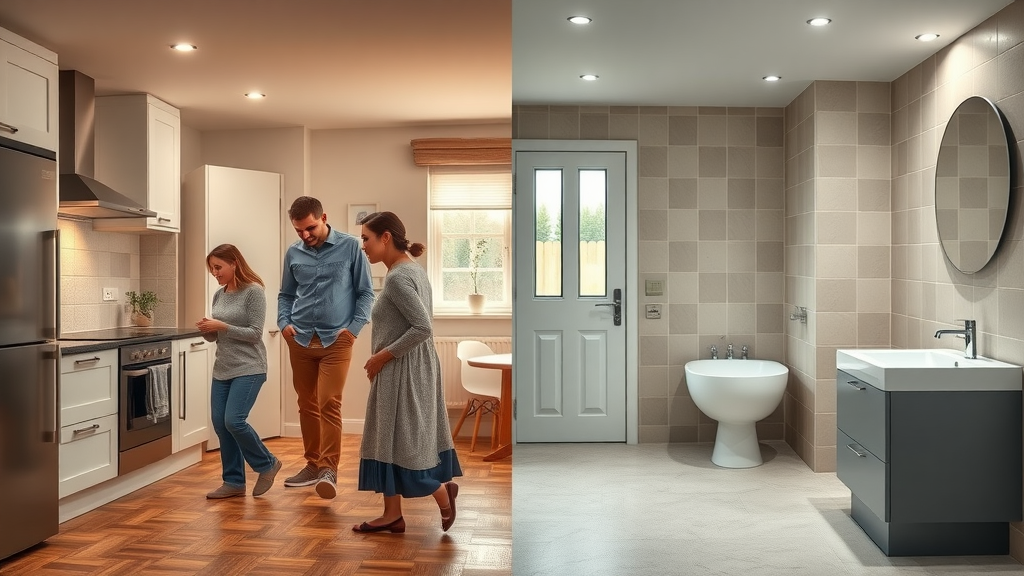
Video Guide: How to Select the Right Underfloor Heating System
Watch: Water vs. Electric Underfloor Heating System Performance
Watch this step-by-step video guide comparing installation, performance, and efficiency of water and electric underfloor heating systems in typical UK homes. Get a visual look at the process, performance metrics, and real-life usage tips to support your decision.
FAQs About Water vs. Electric Underfloor Heating
How long do underfloor heating systems last? With proper installation and maintenance, both water and electric underfloor heating systems can last between 20 and 50 years. Water systems tend to have a longer lifespan due to their robust pipework.
Can underfloor heating be retrofitted? Yes! Electric underfloor heating is especially well-suited for retrofits, while water systems are more practical for major renovations or when floor heights can be adjusted.
Are electric underfloor heating systems safe? Absolutely, provided they are installed and commissioned by a qualified electrician. Modern systems come with temperature limiters and safety devices as standard.
Is underfloor heating compatible with all flooring types? Most types, including tile, stone, engineered wood, and laminate, are compatible. Carpet and some hardwoods require special consideration for heat output and product compatibility.
Key Takeaways: Making an Informed Choice for Your Heating System
Water underfloor heating is usually more energy-efficient long-term.
Electric systems excel in simplicity and are great for smaller or retrofit projects.
Professional advice is essential for the right heating system for your property.
Peak Underfloor Heating Ltd offers customised support for every installation.
Conclusion: Transform Your Home with Water or Electric Underfloor Heating
"Ready to upgrade your comfort and efficiency? Trust Peak Underfloor Heating Ltd to deliver the ideal solution for your property."
Take action today: let Peak Underfloor Heating Ltd help you choose and install the perfect underfloor heating system for your home and lifestyle.
Contact Peak Underfloor Heating Ltd for Expert Advice and Installation
Contact us for a free consultation or to arrange a no-obligation quote. Our experienced team will walk you through every step—from system design, product selection, and installation, to aftercare and support. Whether you’re improving a new build or upgrading your cherished family home, we’re here to deliver warmth, efficiency, and savings.
Book your consultation with Peak Underfloor Heating Ltd today.
Sources
The Heating Hub – https://www.theheatinghub.co.uk/articles/underfloor-heating
Energy Saving Experts – https://www.energy-saving-experts.co.uk/underfloor-heating/
Peak Underfloor Heating Ltd – https://www.peakunderfloorheating.co.uk/
When deciding between water-based and electric underfloor heating systems, it’s essential to consider factors such as installation complexity, cost, energy efficiency, and suitability for your specific project.
Installation Complexity and Cost
Electric underfloor heating systems are generally quicker and easier to install, making them ideal for retrofitting existing spaces or heating smaller areas like bathrooms and kitchens. They can often be installed within a few hours to a few days, depending on the project’s size. However, they may have higher running costs due to electricity prices. (warmup.com)
In contrast, water-based systems involve a more complex installation process, requiring a network of pipes connected to a boiler or heat pump. This complexity often necessitates professional installation and can be more time-consuming and costly upfront. However, they are generally more energy-efficient and cost-effective in the long term, especially for larger areas or whole-house heating. (tradeunderfloor.co.uk)
Energy Efficiency and Running Costs
Water underfloor heating systems are typically more energy-efficient, particularly when combined with renewable energy sources like heat pumps. They operate at lower temperatures and distribute heat evenly, leading to lower running costs over time. (underfloor-heating-company.com)
Electric systems, while easier to install, can be more expensive to operate due to higher electricity costs. They are best suited for smaller areas or as supplementary heating in specific rooms. (underfloor-heating-company.com)
Suitability for Different Projects
For new builds or major renovations, water-based systems are often preferred due to their long-term efficiency and integration with existing heating systems. They are well-suited for heating larger spaces or entire homes. (underfloor-heating-company.com)
Electric systems are more suitable for retrofitting in existing homes or for heating smaller, individual rooms. Their ease of installation and minimal disruption make them a practical choice for targeted heating solutions. (underfloor-heating-company.com)
In summary, the choice between water and electric underfloor heating depends on your specific needs, budget, and project scope. Water-based systems offer greater energy efficiency and are cost-effective for larger areas, while electric systems provide flexibility and ease of installation for smaller spaces or retrofit projects.
 Add Row
Add Row  Add
Add 






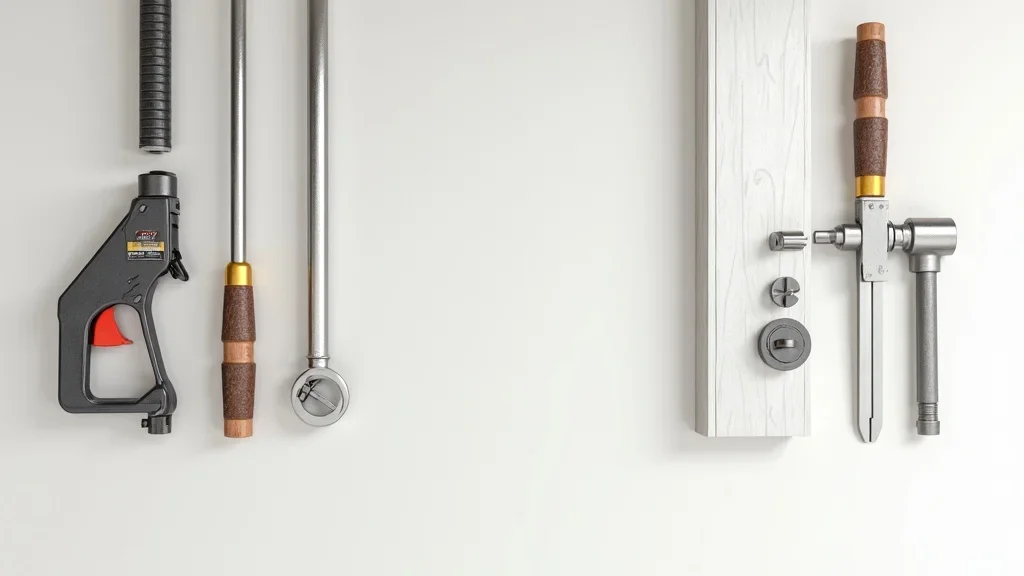


Write A Comment